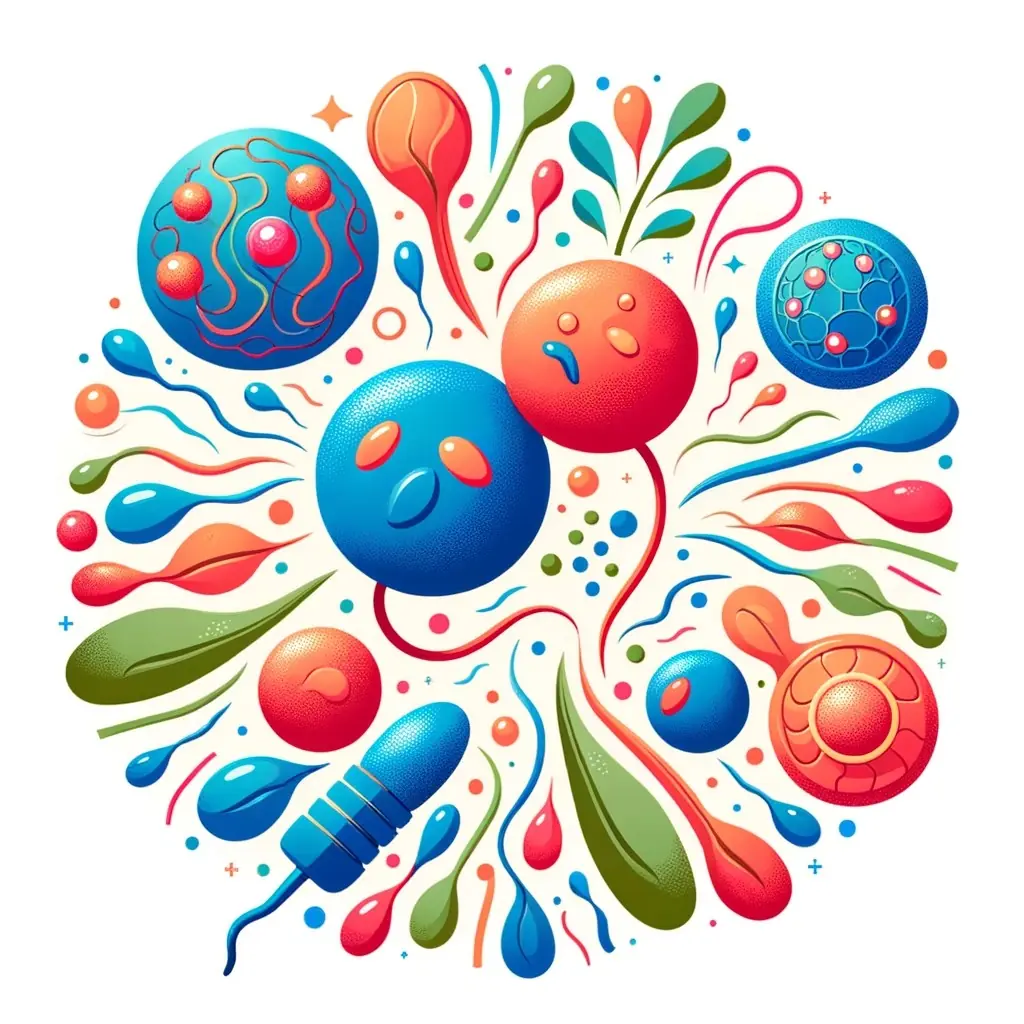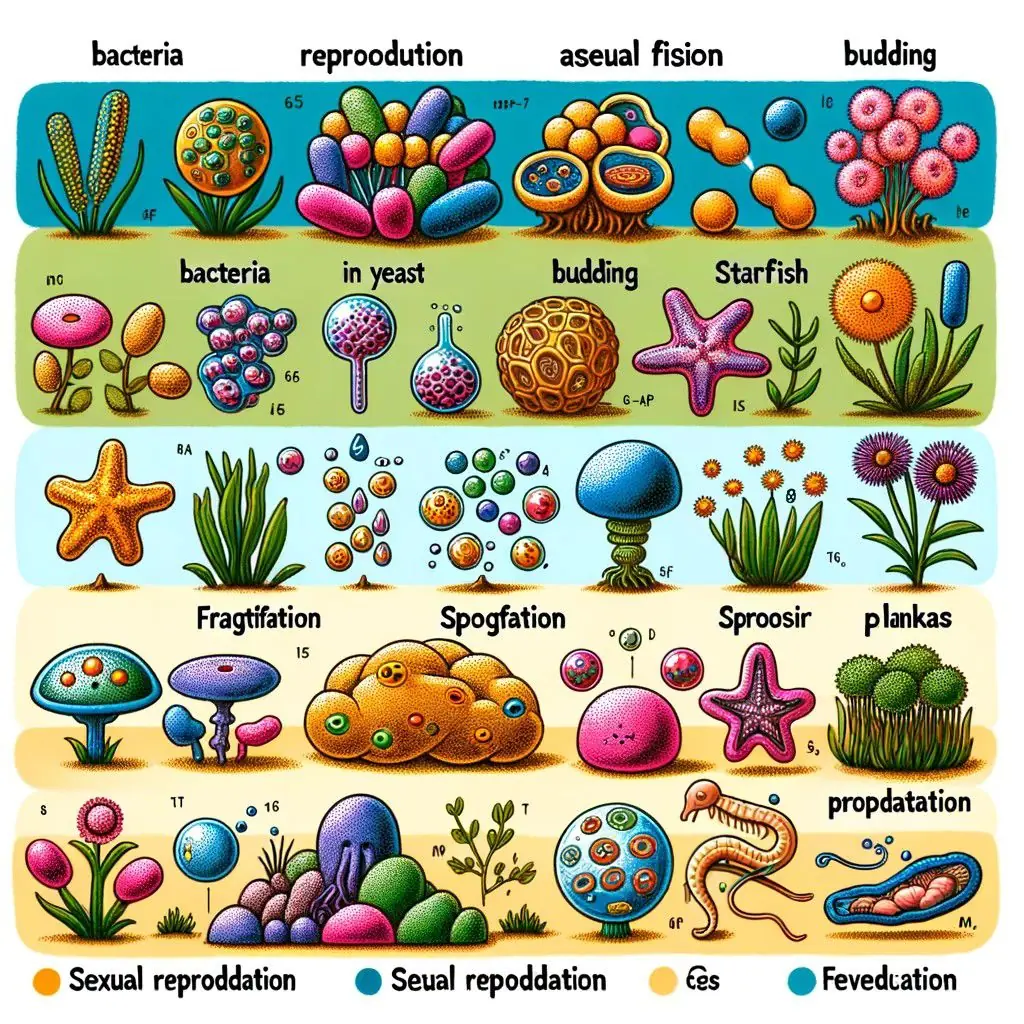
Understanding Reproduction in Organisms: A Comprehensive Guide for Students and Educators

Reproduction in Organisms: A Comprehensive Guide for Class 10 Students
Introduction to Reproduction
Reproduction is a fundamental process of biology that ensures the continuation of species. It is the method through which organisms produce offspring, thereby passing on their genetic information to the next generation. This fascinating process varies significantly across different species, and understanding these methods is key to understanding life itself.
Types of Reproduction
Asexual Reproduction
Asexual reproduction involves a single organism or cell. The offspring is genetically identical to the parent, resulting in clones.
- Binary Fission: Common in bacteria, the cell divides into two equal parts.
- Budding: Seen in yeast, where a new organism grows out of the body of the parent.
- Fragmentation: In organisms like starfish, a part of the body breaks off and develops into a new individual.
- Spore Formation: In fungi, spores are produced which can grow into new organisms.
- Vegetative Propagation: In plants, new individuals are formed from the vegetative parts of the plant, like roots, stems, or leaves.
Sexual Reproduction
Sexual reproduction involves the fusion of male and female gametes. It results in offspring with genetic material from both parents, promoting genetic diversity.
- Gametogenesis: The process of forming male and female gametes.
- Fertilization: The fusion of male and female gametes.
- Embryogenesis: The development of an embryo from the fertilized egg.
Human Reproduction
Human reproduction is a complex process involving several stages:
- Gamete Formation: Sperm in males and eggs in females.
- Fertilization: The joining of sperm and egg.
- Embryo Development: The fertilized egg develops into an embryo.
- Birth: The fetus is delivered after a gestation period.
Reproduction in Plants
Plants can reproduce both sexually and asexually. Sexual reproduction involves the formation of seeds, while asexual methods include budding, fragmentation, and vegetative propagation.
Environmental Impact on Reproduction
Environmental factors like temperature, light, and availability of nutrients significantly affect the reproductive process in organisms.
Importance of Reproduction
Reproduction is crucial for the survival of species, maintaining genetic diversity, and evolution.
Conclusion
Understanding reproduction is essential for appreciating the diversity of life and the processes that sustain it.
Frequently Asked Questions
- What is the difference between asexual and sexual reproduction?
- Asexual reproduction involves one parent and produces genetically identical offspring. Sexual reproduction involves two parents and produces genetically diverse offspring.
- Why is genetic diversity important?
- It helps in adaptation and survival of species in changing environments.
Glossary
- Gamete: A male or female reproductive cell.
- Fertilization: The fusion of male and female gametes.
- Embryo: The early stage of development in multicellular organisms.
Activities for Better Understanding
- Model Making: Create a model of a flower showing its reproductive parts.
- Case Study: Study the reproduction process of a particular plant or animal species.

1. Organisms Creating Exact Copies of Themselves
This refers to asexual reproduction, where an organism reproduces without the involvement of another organism. This process results in offspring that are exact genetic copies of the parent. Asexual reproduction is common in many microorganisms and some plants. Methods include:
- Binary fission in bacteria, where the cell divides into two.
- Budding in yeast, where a new organism grows out of the parent.
- Vegetative propagation in plants, such as growing a new plant from a cutting.
2. Modes of Reproduction Used by Single Organisms
Single organisms can reproduce through various asexual methods, as mentioned above. Additionally, some single-celled organisms like protozoa use a method called spore formation, where resistant spores are formed and can grow into new individuals.
3. Sexual Reproduction
Sexual reproduction involves the fusion of male and female gametes, resulting in offspring with genetic material from both parents. This process increases genetic diversity, which is beneficial for the survival and evolution of species. Stages include:
- Gametogenesis: Formation of sperm in males and eggs in females.
- Fertilization: Fusion of these gametes.
- Embryo development: The fertilized egg develops into an embryo and eventually into a new individual.
4. Reproductive Health
Reproductive health refers to the complete well-being in all aspects of reproduction. It includes:
- Physical health: Ensuring healthy body functions related to reproductive systems.
- Emotional health: Managing emotions and stress related to reproductive issues.
- Social health: Understanding and respecting societal norms around reproduction.
- Safe practices: Engaging in safe reproductive behaviors, like using contraception to prevent unwanted pregnancies and sexually transmitted diseases.
Reproductive health education is vital for adolescents and adults to understand and make informed decisions about their reproductive lives. It also encompasses the treatment and prevention of reproductive health issues and diseases.
- Q: What is asexual reproduction?
- A: Asexual reproduction is a process where an organism makes a copy of itself without the involvement of another organism. The offspring are genetically identical to the parent.
- Q: Name two methods of asexual reproduction in plants.
- A: Two methods of asexual reproduction in plants are vegetative propagation and spore formation.
- Q: What is the significance of sexual reproduction in organisms?
- A: Sexual reproduction increases genetic diversity, which is crucial for the survival and adaptation of species to changing environments.
- Q: How do bacteria reproduce?
- A: Bacteria reproduce by binary fission, a process where a single bacterial cell divides into two identical daughter cells.
- Q: What are gametes?
- A: Gametes are reproductive cells; in humans and many other species, they are the sperm (male gamete) and the egg (female gamete).
- Q: What happens during fertilization?
- A: During fertilization, a male gamete (sperm) fuses with a female gamete (egg) to form a zygote, which then develops into a new organism.
- Q: What is the role of spores in reproduction?
- A: In some organisms, like fungi, spores serve as a means of reproduction. They can grow into new individuals under favorable conditions.
- Q: Define reproductive health.
- A: Reproductive health refers to the complete physical, mental, and social well-being in all matters relating to the reproductive system.
- Q: Why is genetic diversity important in sexual reproduction?
- A: Genetic diversity, which results from sexual reproduction, is important because it allows species to adapt to new environments and helps in the survival against diseases.
- Q: What is the process of development from a fertilized egg to a fully formed organism called?
- A: This process is called embryogenesis. It starts with a fertilized egg (zygote) and goes through various stages of development to form a fully developed organism.